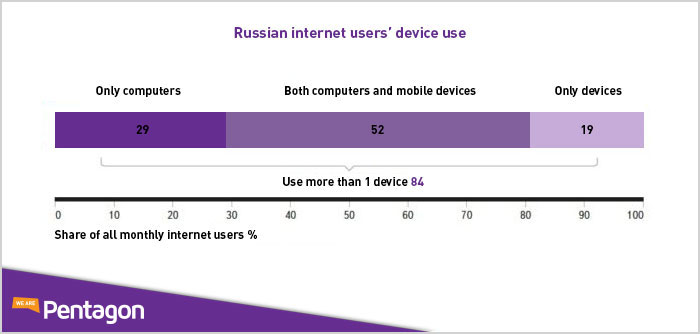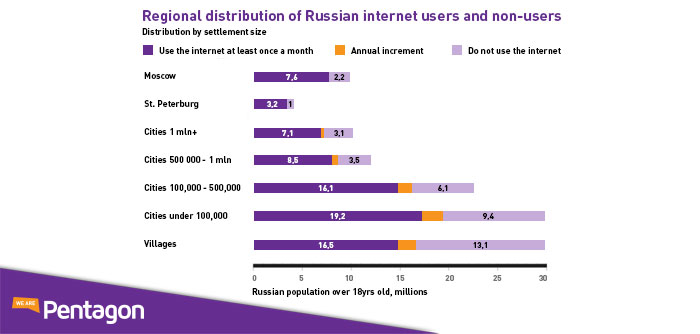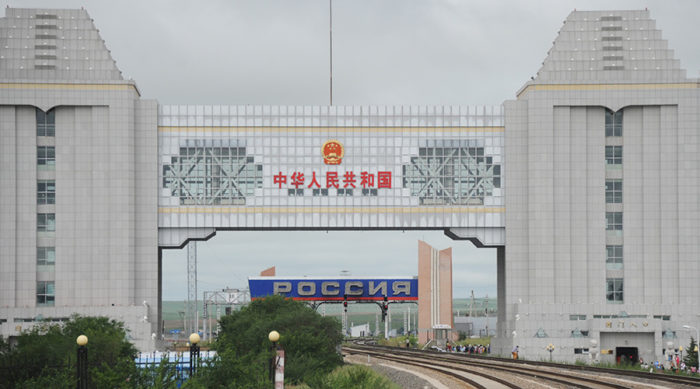
Have you ever been to Vladivostok? If not, we cannot blame you as it is in an isolated area of the Far East district, and it is actually… far! The distance between Moscow and Vladivostok is more than 9,000 km – greater than the distance between the Russian capital and London. That’s probably why delivering a parcel there is not an easy job. In spite of this, Russian B2C ecommerce sales in 2017 are forecast to reach over 16 USD$ billion and over 18 in 2018. This week, we decided to investigate a little deeper into Russian logistic challenges.

[Russian Internet users’ device – TNS Global, 2016]
The Russian Federation has 71 million internet users, equating to 39.6% of the population, who are mostly concentrated in the European part of the country (Central District). This number is expected to hit 52% in 2021.
People across the eight federal districts still prefer to use desktop computers rather than smartphones, and tablets represent a very small part of the devices used online. Even if the regional distribution of Russian internet users tells us that Moscow is the most digitally-inclined city in the Federation, the Privolzhsky District is emerging as the one with the fastest growing internet usage.
Moscow seems to have reached its full internet potential and is one of the slowest-growing cities regarding web usage. Conversely, in villages and towns with a population below 500 thousand people, the number of users continues to rise steadily.

[Regional distribution of Russian internet users and non-users by centre-size, TNS Global, 2016]
Same-day delivery is a standard service in Moscow while getting a parcel delivered in the isolated zones of the Asian areas of the Federation can take up to seven days. Obviously, the geographical vastness of the country is the explanation for that long wait – the Russian territory is spread across over 17 million km2 organised into eight federal districts, and eleven time zones, and is the homeland to over 144 million people with different cultures comprising both European and Asian traditions. That’s why we cannot treat Russia as a single homogeneous entity when speaking about ecommerce. Knowing all the challenges and the differences is vital to the success of a business.
To tame the distances of the country, a local branch or at least a warehousing hub is a game-changer for delivery time and general ecommerce operations. To offer an impeccable service in Russian logistic, ecommerce players need also to be able to handle different habits and the more demanding aspects of legislation on personal data as Russian citizens’ information cannot be stored outside the national borders.
For these reasons, as well, there is room for improvement in the fulfilment service market, especially because the market is suffering from a lack of local capacity for large-scale operations at the moment.

[Railway between Russia and China borders via @www.rt.com]
Try on delivery: in some parts of the Federation there is a sort of “try and maybe buy”: people can have clothes delivered to their homes, try on the outfits and reject the order immediately if not satisfied. Could you do that for your customers in Europe?
Instalments: thanks to some of the of the biggest players in the country, Russian customers have the privilege to pay by instalments with a special seller’s card when buying on the platform.
Pay-on-delivery: cash on delivery is still very popular and can be seen as a distinctive feature of this market, besides that, digital payments on delivery are also possible as many courier operators are equipped with a mobile PDQ card machine.

Let us develop a tailored solution for your business that will help you reach new international customers and grow your global sales.
get in touch